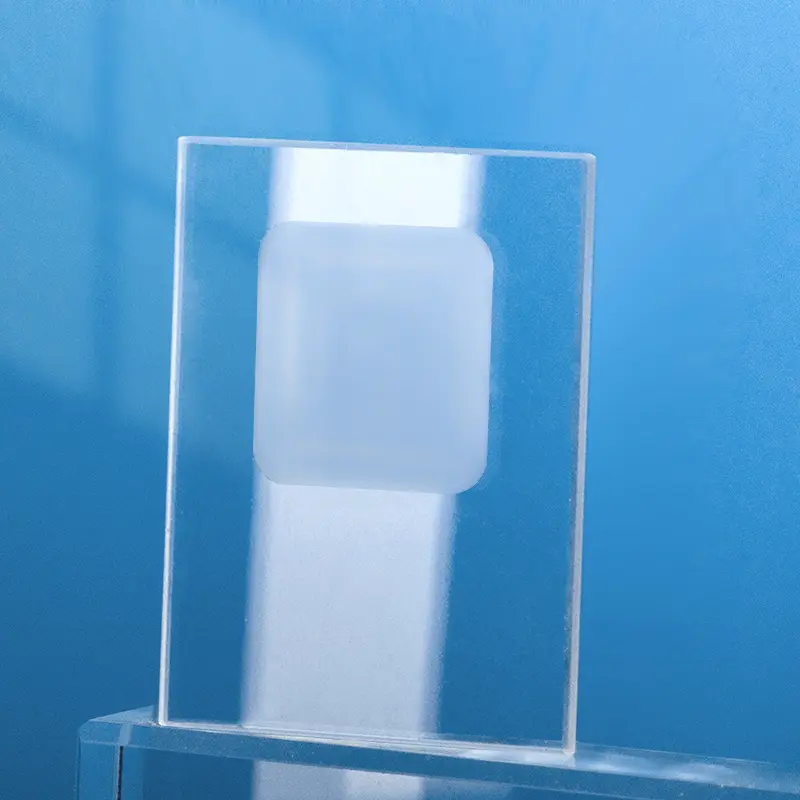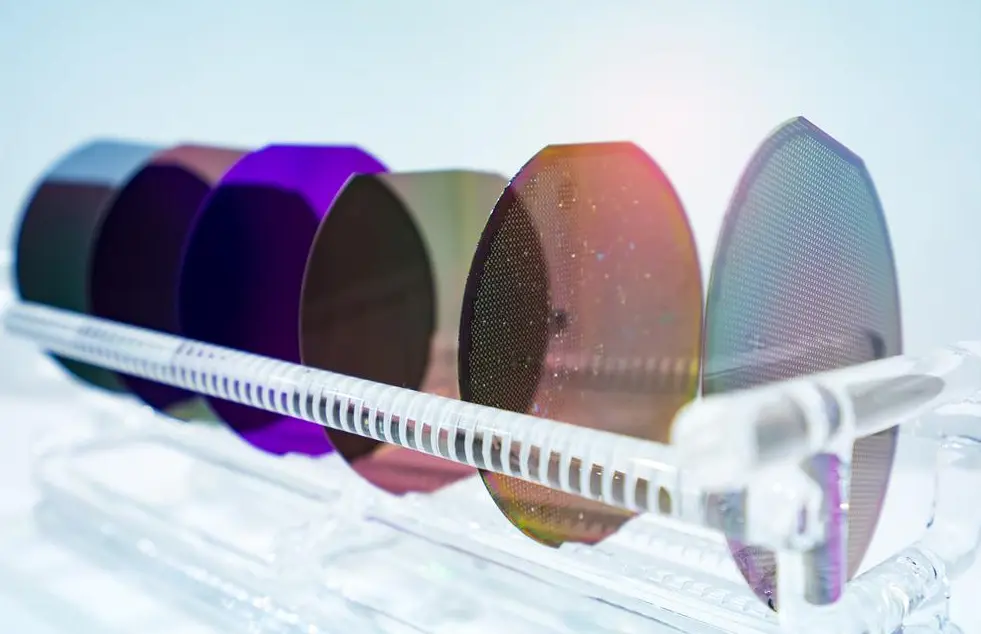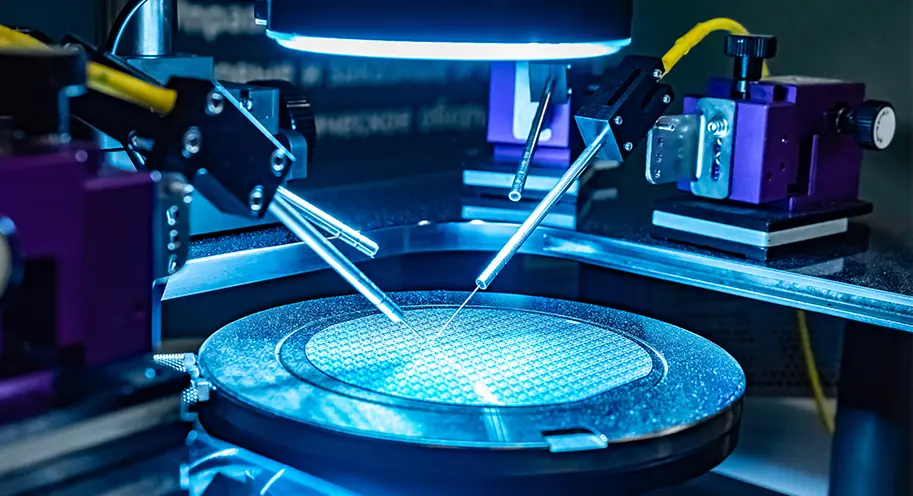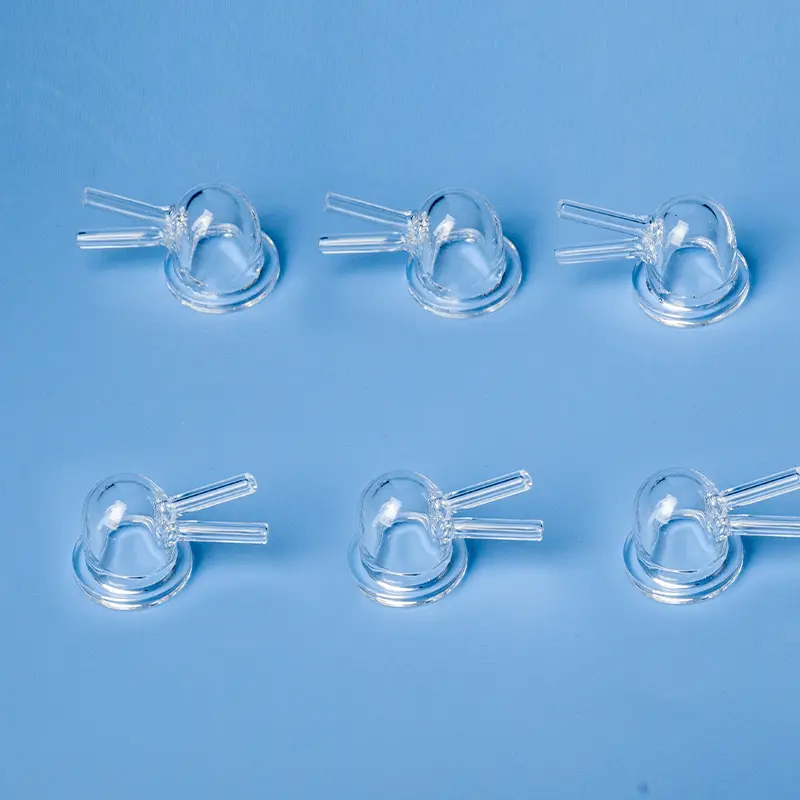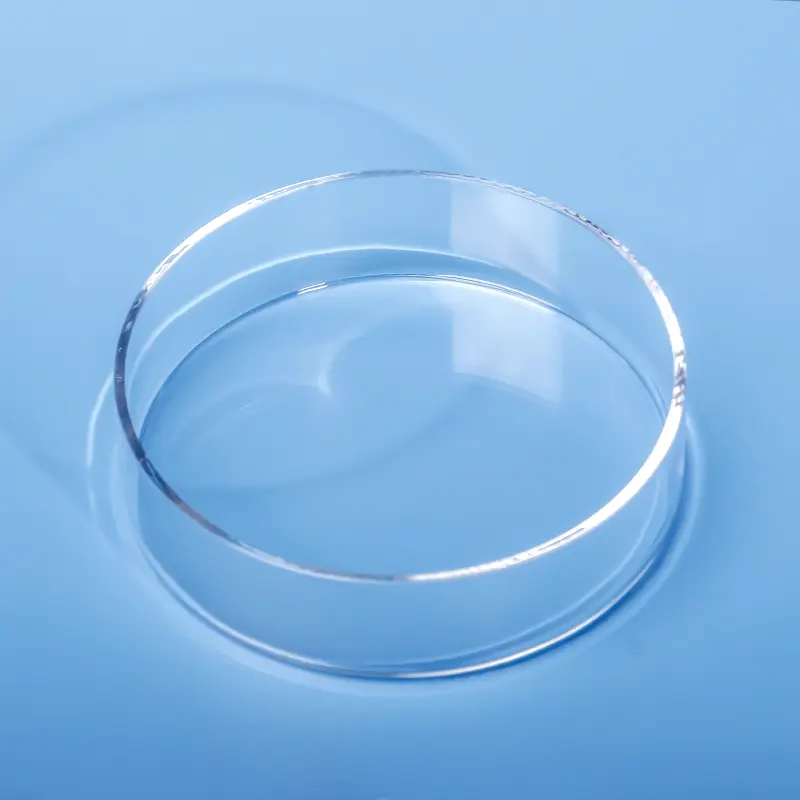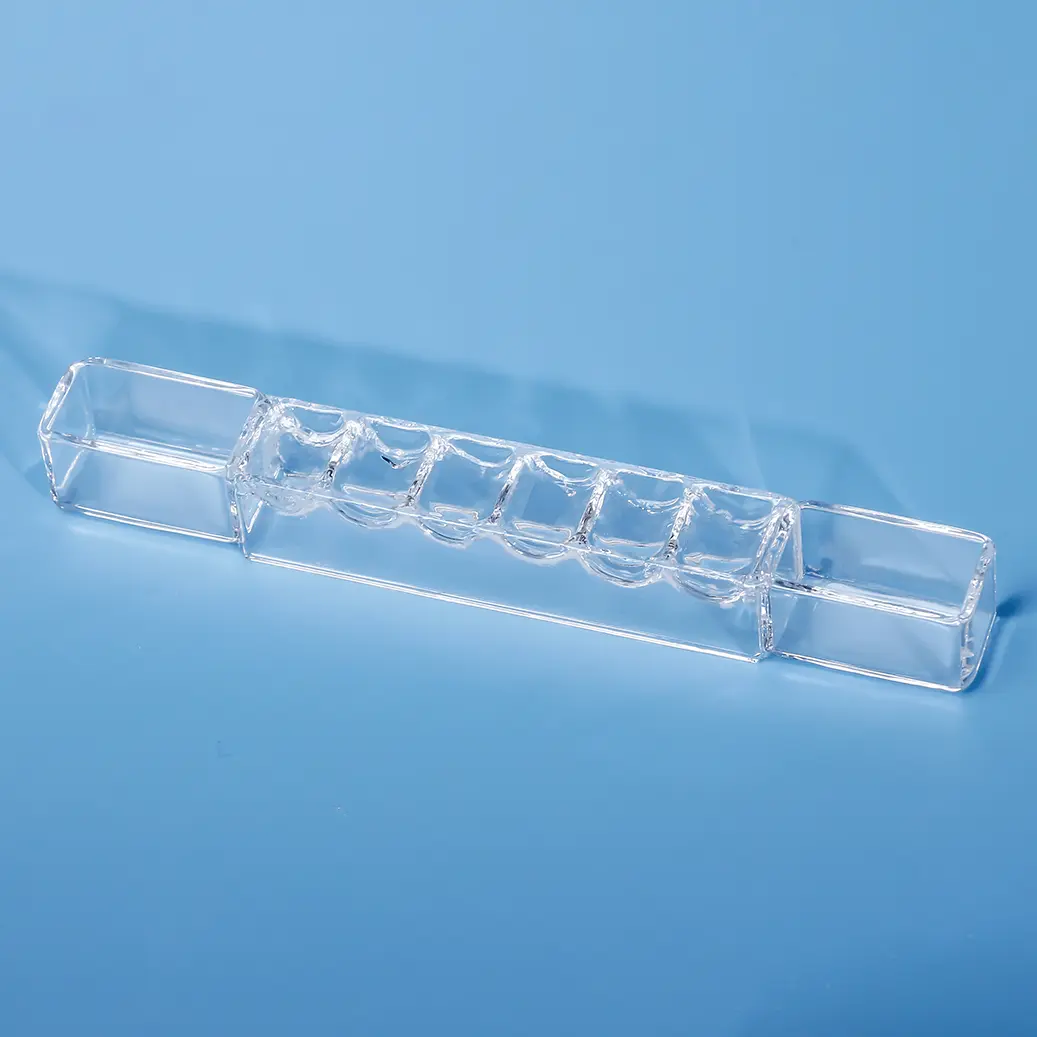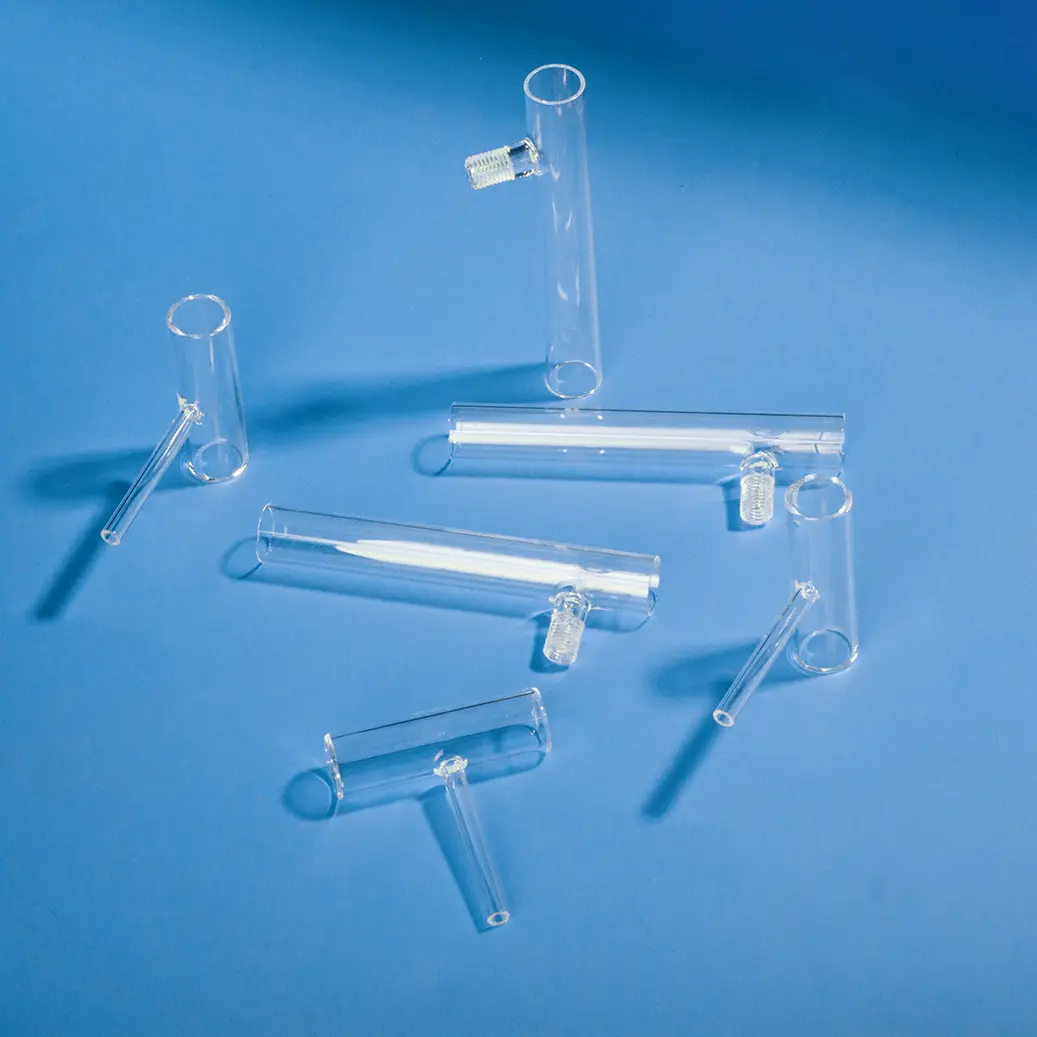Nuestros portamuestras de cuarzo para DRX están meticulosamente elaborados a partir de sílice fundida de alta pureza, ofreciendo una estructura amorfa que asegura una interferencia de fondo mínima en el análisis de difracción de rayos X. El diseño transparente, con un pozo de muestra rectangular central esmerilado, es químicamente inerte y altamente resistente a temperaturas extremas, lo que lo hace ideal para varios tipos de muestras, incluyendo polvos y películas delgadas. Proporcionamos soluciones personalizadas para satisfacer requisitos específicos de diferentes difractómetros de rayos X y aplicaciones de investigación avanzadas.
| Contenido de la propiedad | Valores de la propiedad |
|---|---|
| SiO2 | 99.99% |
| Densidad | 2,2×10³ kg/cm³ |
| Dureza | Dureza Mohs de 5,5 a 6,5; Dureza Knoop 570 (con una carga de 100g) |
| Resistencia a la tracción | 4,8 × 10⁷ Pa (48 N/mm² o 48 MPa); 7.000 psi |
| Resistencia a la compresión | >1.1×10⁹ Pa (160,000 psi) |
| Coeficiente de dilatación térmica | 5.5×10⁻⁷ cm/cm·°C (20°C-320°C) |
| Conductividad térmica | 1,4 W/m-°C |
| Calor específico | 670 J/kg-°C |
| Punto de ablandamiento | 1730°C (3146°F) |
| Punto de recocido | 1210°C (2210°F) |
| Punto de deformación | 1120°C (2048°F) |
| Temperatura de trabajo | 1200°C (2192°F) |
| Resistividad eléctrica | 7×10⁷ ohm cm (350°C) |
| Tamaño | Personalizado |
| Logotipo | Se acepta el logotipo personalizado |
Alta resistencia a la temperatura
Los porta muestras XRD de cuarzo están hechos de vidrio de cuarzo, que tiene un punto de ablandamiento de aproximadamente 1730°C. Pueden usarse por períodos prolongados a 1100°C y por duraciones cortas a temperaturas de hasta 1450°C
Estabilidad química
El vidrio de cuarzo es altamente resistente a las reacciones químicas con la mayoría de los ácidos. Su resistencia a los ácidos es aproximadamente 30 veces mayor que la de la cerámica y 150 veces mayor que la del acero inoxidable. Exhibe una estabilidad química excepcional, particularmente a altas temperaturas.
Bajo coeficiente de expansión térmica
El vidrio de cuarzo posee un coeficiente de expansión térmica extremadamente bajo, lo que le permite soportar cambios rápidos de temperatura sin fracturarse. Esto proporciona una excelente estabilidad térmica.
Excelente transmitancia de luz
El vidrio de cuarzo exhibe una excelente transmisión óptica en todo el espectro, desde el ultravioleta hasta el infrarrojo. Su transmisión de luz visible es superior al 93%, y en la región espectral ultravioleta, su transmisión puede superar el 90%.
Escenario de aplicación
Análisis de la estructura cristalina en ciencia de materiales
Los portamuestras XRD de cuarzo son cruciales en diversos campos de la ciencia de materiales, especialmente para el análisis de la estructura cristalina. Al analizar los patrones de difracción producidos por la interacción de los rayos X con un material, se puede obtener información vital sobre la estructura cristalina, el tamaño de grano, la composición de fase y el estado de tensión del material.
Composición de fase y análisis de materiales multifásicos
Los portamuestras XRD de cuarzo se utilizan para identificar componentes y sus proporciones relativas dentro de materiales policristalinos como aleaciones, cerámicas y composites. También son importantes para investigar las características estructurales locales de materiales amorfos, como el vidrio y las aleaciones amorfas.
Estudios de transición de fase y estabilidad térmica
Los portamuestras XRD de cuarzo permiten el estudio del comportamiento de transición de fase en materiales bajo condiciones variables de temperatura o presión. Al calentar o enfriar las muestras y monitorear sus patrones de difracción, los investigadores pueden determinar si ocurren transiciones de fase bajo condiciones específicas.
Aplicaciones de materiales críticos en la fabricación de semiconductores
En la industria de los semiconductores, los portamuestras XRD de cuarzo desempeñan un papel importante debido a sus propiedades de resistencia a altas temperaturas y a la corrosión. Se utilizan en dispositivos de alta temperatura, como tubos de horno y barcas de vidrio (o de cuarzo) para procesos de difusión y oxidación, y en dispositivos de baja temperatura, como anillos de cuarzo para procesos de grabado.
Al utilizar portamuestras XRD de cuarzo para experimentos, se deben observar los siguientes puntos:
Asegúrese de que el portamuestras esté limpio y libre de polvo para evitar contaminar la muestra y afectar los resultados de difracción.
La muestra debe distribuirse uniformemente en el portamuestras para obtener señales de difracción óptimas.
Evite exponer el portamuestras a cambios drásticos de temperatura para evitar que el vidrio de cuarzo se agriete debido a diferenciales de temperatura excesivos.
Al usar el portamuestras a altas temperaturas o bajo condiciones específicas, siga las pautas del fabricante y las regulaciones de seguridad.
Los siguientes pasos pueden utilizarse para limpiar y mantener los portamuestras de cuarzo para DRX:
Retire suavemente el polvo y los residuos de la superficie del portamuestras utilizando un paño suave o un cepillo.
Para manchas difíciles, utilice un detergente suave y agua para la limpieza, pero asegúrese de un enjuague y secado a fondo para evitar cualquier residuo químico.
Revise regularmente el portamuestras en busca de grietas o daños, especialmente después de experimentos de alta temperatura o alta presión.
Almacénelo en un lugar seco y limpio, lejos de la luz solar directa y ambientes húmedos.
La vida útil de un portamuestras de cuarzo para DRX depende de varios factores, que incluyen:
Frecuencia de uso y condiciones experimentales; el uso frecuente o en condiciones extremas puede acortar su vida útil.
Mantenimiento y limpieza del portamuestras; un buen mantenimiento puede prolongar su vida útil.
Calidad del material y fabricación del portamuestras; el vidrio de cuarzo de alta calidad es típicamente más duradero.
Preguntas más frecuentes
Nos especializamos en la fabricación integral de componentes de vidrio de cuarzo de alta pureza. Nuestras principales líneas de productos incluyen:
Tubos y varillas de cuarzo: Una amplia gama de diámetros y especificaciones.
Placas y discos de cuarzo: Corte de precisión y pulido para uso óptico e industrial.
Cristalería de laboratorio de cuarzo: Una suite completa de cristalería estándar y personalizada, incluyendo vasos de precipitados, matraces y barcas.
Cuarzo de grado semiconductor: Componentes de alta pureza como tubos de proceso y portadores para la fabricación de semiconductores.
Componentes fabricados a medida: Podemos producir piezas complejas adaptadas a sus diseños y especificaciones únicas.
Sí. La fabricación personalizada es el pilar central de nuestro negocio. Con más de una década de experiencia especializada, nos asociamos con empresas para ofrecerles servicios expertos de OEM/ODM. Nuestras capacidades incluyen soldadura, rectificado, perforación, pulido, doblado y otras técnicas de mecanizado de precisión para crear componentes que cumplan con sus requisitos exactos.
La calidad es primordial en nuestro proceso de fabricación. Somos un fabricante certificado ISO 9001:2015, lo que garantiza que nuestros procesos cumplen con los estándares internacionales de gestión de calidad.Nuestros productos también se someten a rigurosas pruebas SGS de pureza y rendimiento. Utilizamos materias primas de alta pureza (hasta 99,998% de SiO2) para producir productos de cuarzo fundido y sílice fundida con una estabilidad térmica excepcional, alta resistencia a la temperatura e inercia química.
Hemos optimizado nuestro proceso para que sea lo más eficiente posible:
Envíe su Solicitud de Cotización (RFQ): Envíenos sus dibujos técnicos, especificaciones y requisitos a través de nuestro formulario de contacto en el sitio web o por correo electrónico.
Respuesta rápida: Puede esperar una respuesta inicial en cuestión de minutos y una comunicación detallada en media hora.
Diseño y Propuesta: Le entregaremos una propuesta de diseño detallada y un presupuesto competitivo en 24 horas.
Prototipado y Producción: Tras la aprobación, pasamos rápidamente del prototipado a la producción a gran escala para cumplir con sus plazos de entrega.
Asociarse con Aoxin Quartz ofrece varias ventajas clave:
Experiencia comprobada: Con más de 10 años en la industria, poseemos el conocimiento técnico para abordar desafíos complejos.
One-Stop Solution: We manage the entire production process, from sourcing high-purity raw materials to fabricating and finishing complex components.
Valor competitivo: Ubicados en un importante centro de producción de cuarzo, aprovechamos una cadena de suministro eficiente y una fabricación avanzada para ofrecer una calidad excepcional a un precio competitivo.
Dedicated Partnership: Over 90% of our clients become long-term partners. We are committed to your success through responsive service, reliable quality, and innovative solutions.

